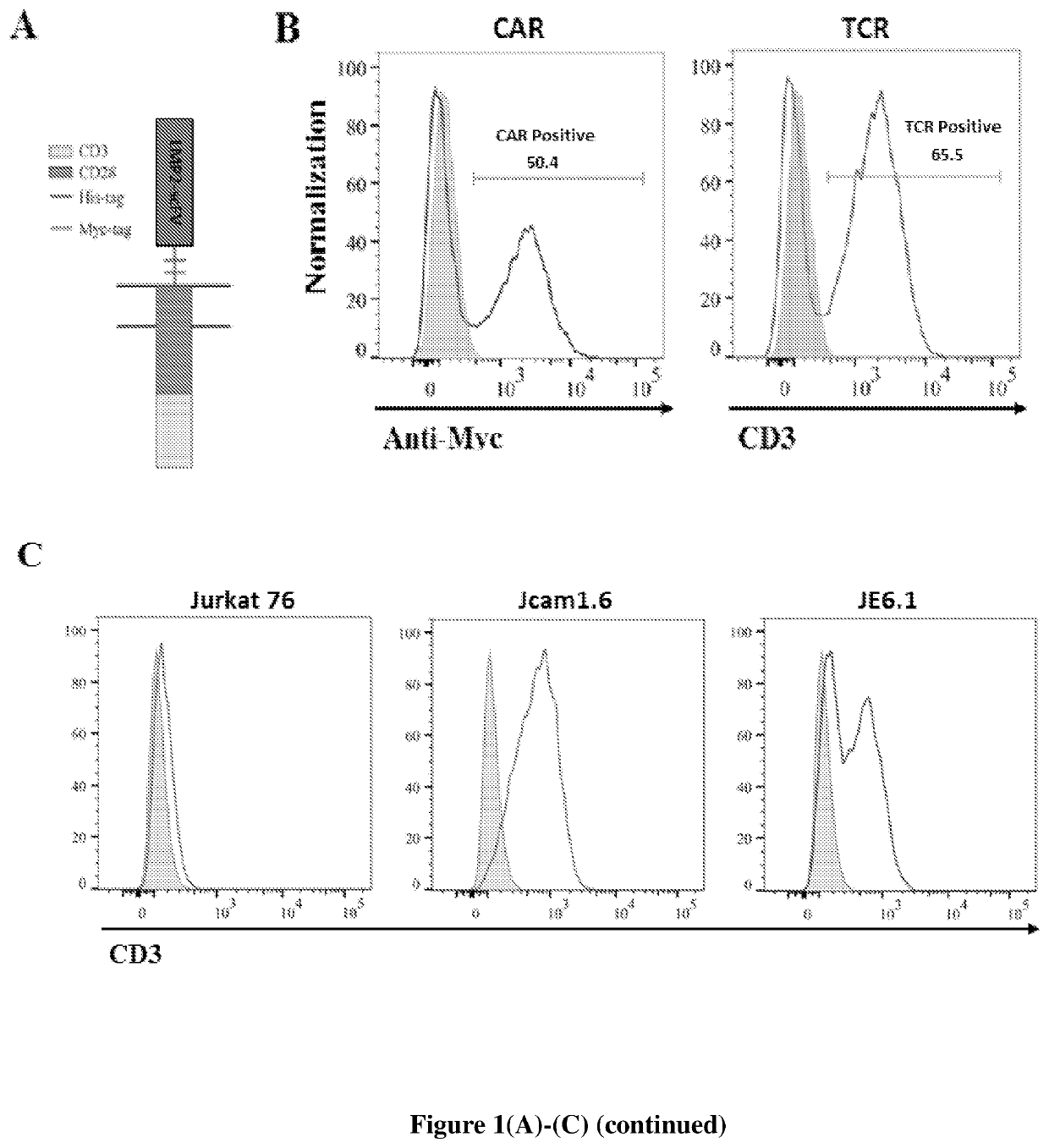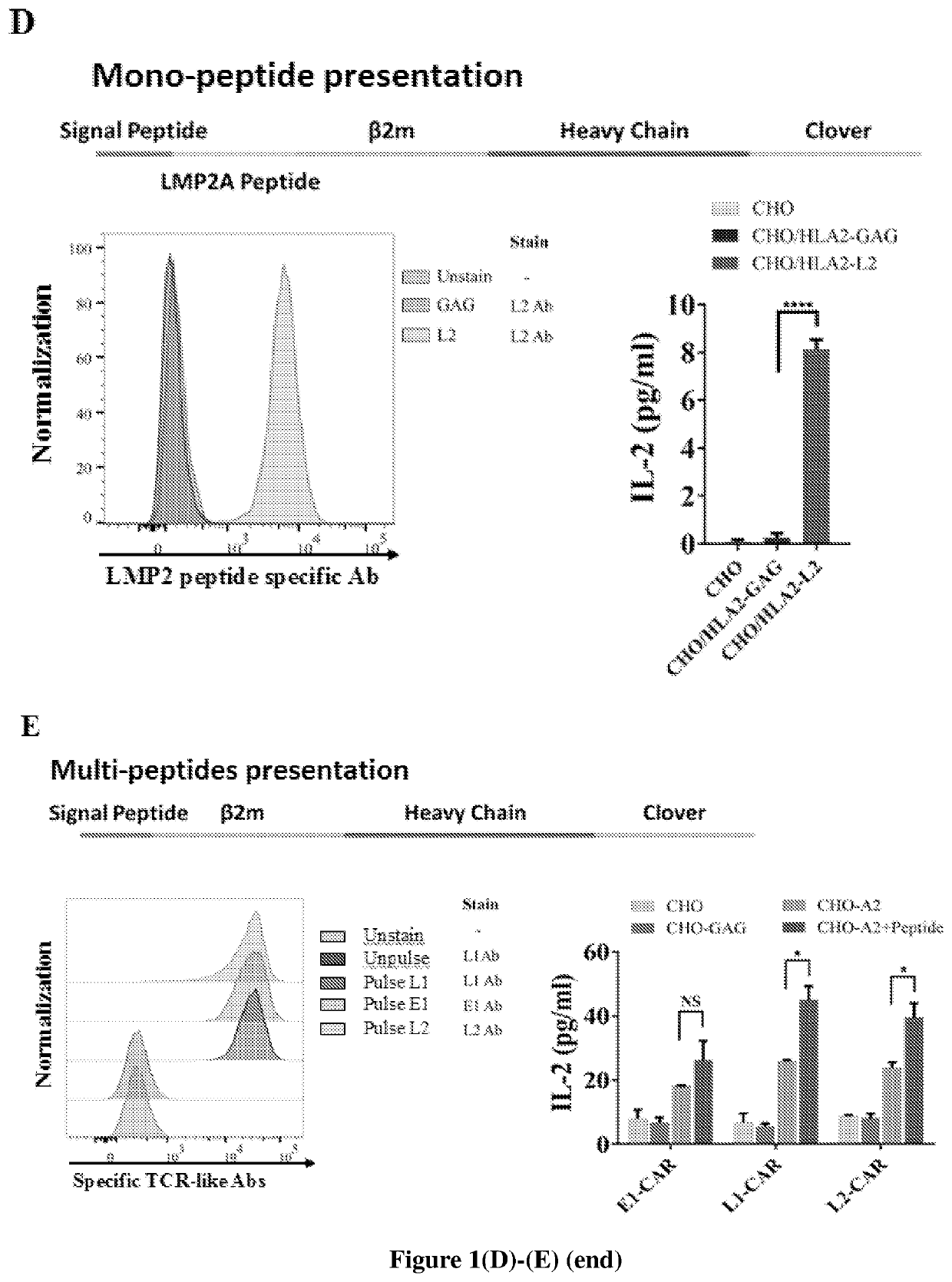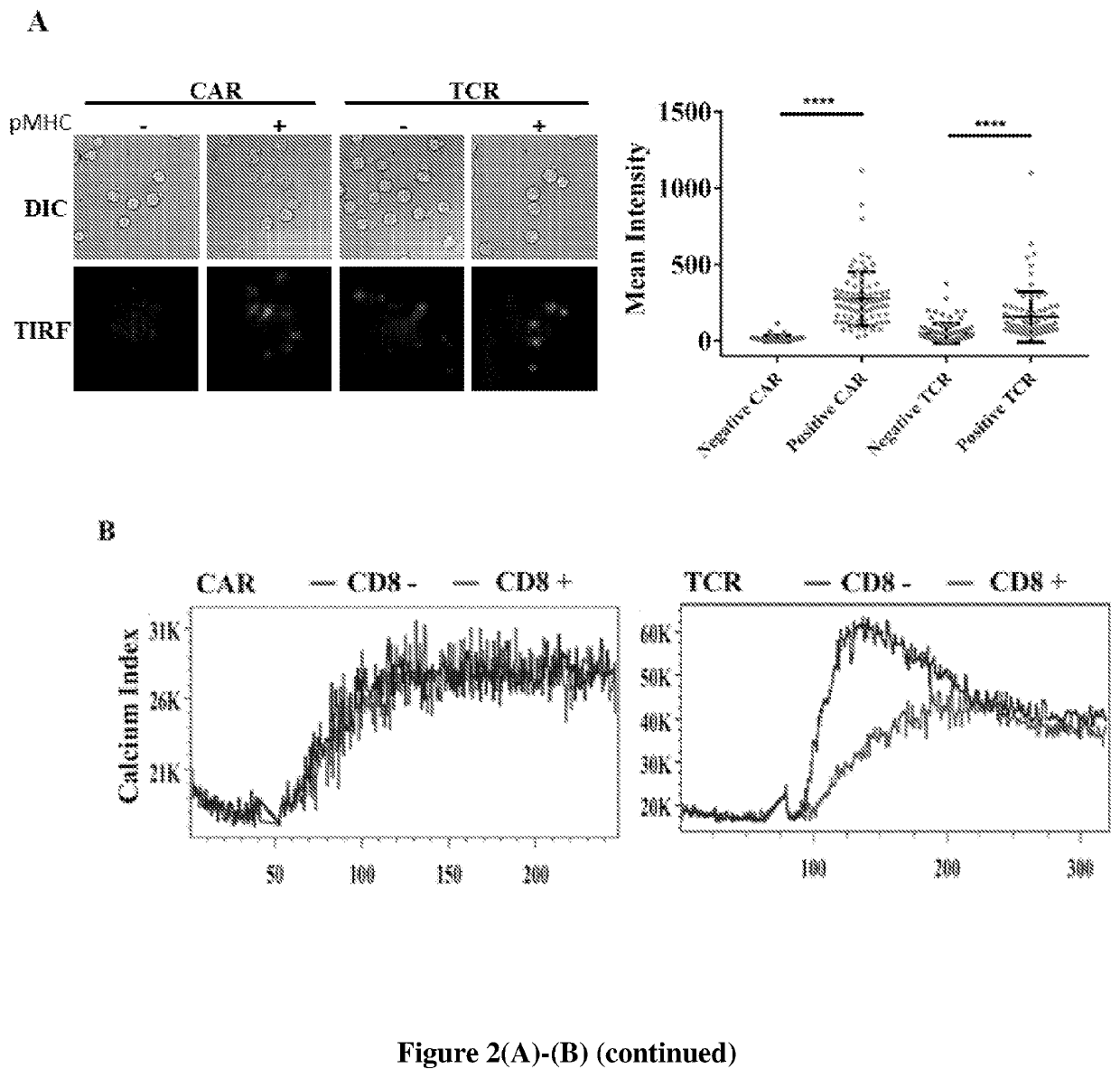Engineered immune cells
a technology of immune cells and engineered cells, applied in the field of immunology, can solve the problems of loss of t cell effector functions, limited immunotherapy with car-t cells, and development of graft-versus-host disease (gvhd) in patients, so as to improve the efficacy of car-t cells and reduce or eliminate the expression and/or function of lck.
- Summary
- Abstract
- Description
- Claims
- Application Information
AI Technical Summary
Benefits of technology
Problems solved by technology
Method used
Image
Examples
example 1
[0153]Artificial Antigen Presenting CHO Cell Provides Antigens for CAR and TCR T Cell Stimulation
[0154]To compare molecular recognition between CAR and TCR in detail, Jurkat T cells expressing CAR and TCR with the same peptide-MHC specificity were generated. The CAR construct was generated based on a previous report where CD28 costimulatory domain was described (Figure. 1A). The scFv on CAR was constructed from a TCR-like antibody, recognizing a peptide epitope of Latent membrane protein 2A (LMP2A) protein from Epstein-Barr virus (EBV) presented by HLA-A2. The term CAR may refer to this second generation CAR using the CD28 transmembrane and cytoplasmic domains. Lentivirus was then applied to deliver CAR into Jurkat 76 T cells, which lack endogenous TCRα and β chains, but contain the full set of CD3 subunits. The lentivirus transduction was efficient both for CAR or for the TCR specific for the same peptide-MHC complex as CAR (FIG. 1B). CAR or TCR-expressing Jurkat cells were sorted ...
example 2
[0157]LCK-Independent CAR Signaling Requires CD28 Costimulatory Domain
[0158]Systematic domain replacements were performed on the CD28-bearing second generation CAR in order to locate which domains trigger the non-canonical T cell signaling of CAR in the absence of LCK. Firstly, it was tested if LCK-independent signaling results from the antigen specificity of the extracellular domain. The TCR-like scFv was swapped to a CD19-scFv, and a CD19-expressing Daudi cell line was used as a target cell (FIG. 8A). The CD19-specific CAR-T cells were activated by the CD19-expressing Daudi cells in the presence or absence of LCK, suggesting that LCK-independent CAR signaling is independent of the antigen specificity of the extracellular CAR domain (FIG. 3A). To determine the importance of the CD3ζ domain, the CD3ζ intracellular domain was deleted, and no IL-2 production was found, demonstrating the indispensability of the CD3ζ ITAMs in CAR-T signaling (FIG. 3B). It was then sought to determine th...
example 3
[0167]Methods
[0168]CD8+ T Cell Activation and Culture
[0169]Blood samples were collected from volunteers and naïve CD8+ T cells isolated by using RosetteSep™ human CD8+ T cell enrichment cocktail (Stemcell) and Ficoll (GE Healthcare Life Sciences) gradient centrifugation. Naïve CD8+ T cells were then stimulated by anti-CD3 / CD28 beads (ThermoFisher) in Biotarget medium (Biological Industry) supplemented with 4% of human platelet lysate (Ultra-GRO™-Advanced, AventaCell) with 100 U / ml IL-2 (R&D System) to produce mature cytotoxic CD8+ T cells. After 48 hrs activation, the mature CD8+ T cells were cultured in medium containing 100 U / ml IL-2, 10 ng / ml IL-15 and 10 ng / ml IL-7 (R&D System). The medium was changed every 2 days, and cells were replated at 106 cells per ml. The T cells were restimulated by feeder cells, peripheral blood mononuclear cells (PBMC) from donors. PBMC were freshly isolated from blood by gradient centrifugation and irradiated at 30 Gy. PBMC and T cells were resuspend...
PUM
| Property | Measurement | Unit |
|---|---|---|
| concentrations | aaaaa | aaaaa |
| concentration | aaaaa | aaaaa |
| time | aaaaa | aaaaa |
Abstract
Description
Claims
Application Information
 Login to View More
Login to View More - R&D
- Intellectual Property
- Life Sciences
- Materials
- Tech Scout
- Unparalleled Data Quality
- Higher Quality Content
- 60% Fewer Hallucinations
Browse by: Latest US Patents, China's latest patents, Technical Efficacy Thesaurus, Application Domain, Technology Topic, Popular Technical Reports.
© 2025 PatSnap. All rights reserved.Legal|Privacy policy|Modern Slavery Act Transparency Statement|Sitemap|About US| Contact US: help@patsnap.com



